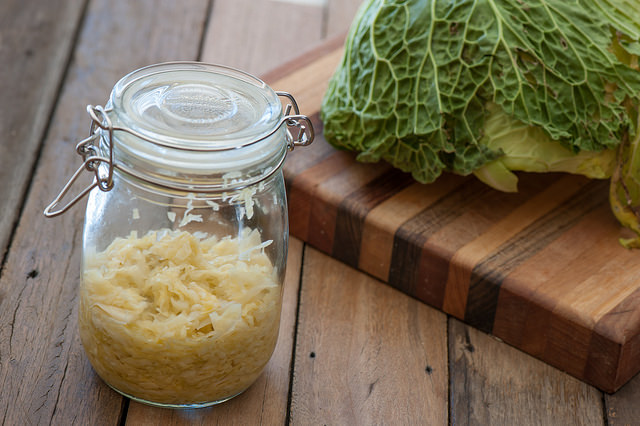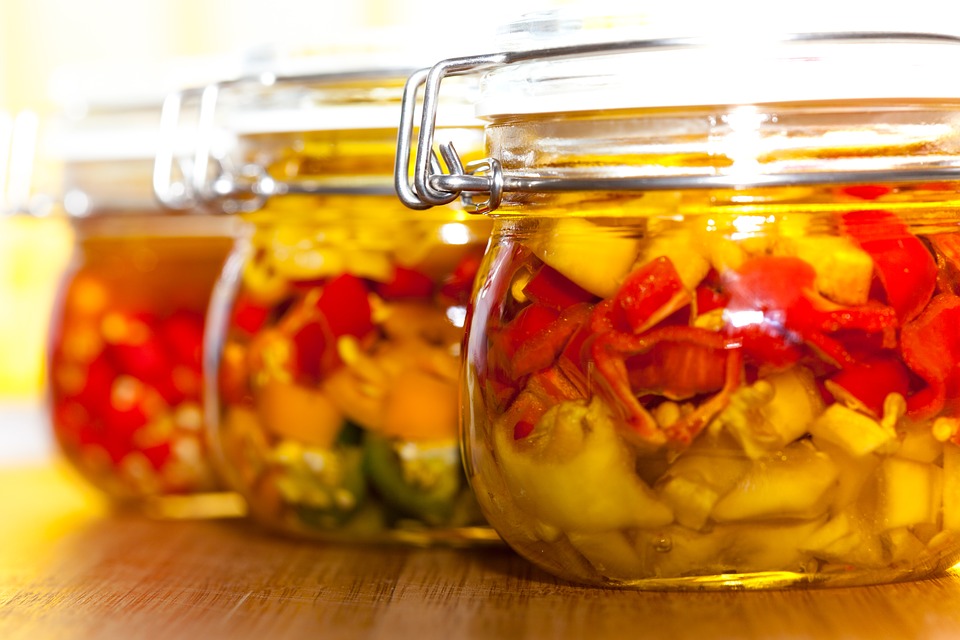Types of Preservation
Preservation is about making crops last longer. How can we do this?
To do this, we have to deprive the microorganisms that spoil our food (e.g. putrefactive bacteria and moulds) of their basis of life. There are various ways of doing this: by removing liquid, killing by heating or by removing air, e.g. by soaking in oil.
In this article we will list various methods to make crops last longer.
Different Methods of Preservation
Dehydrating and Drying
Dehydration is a method of drying fruit, vegetables or mushrooms. They are sliced and placed on a grid so that the air can flow past from all sides. The process takes hours, depending on the temperature (between ). During this process, mainly water is extracted, nutrients are retained. Grains (maize, cereals) and nuts are also dehydrated. For them, the dehydration time is reduced to hours.
An energy-saving dehydrator is the solar dehydrator.
Hay and pulses are dried before storage. They are stored in the open air in dry weather for several days on special racks. After drying, beans and peas can be removed from the pods and stored. Hay can also be dried in the meadow if it is regularly turned and raked overnight.

Curing and Smoking
In curing, salt is used to remove water from meat. To do this, the meat is rubbed with pickling salt (made from sodium and potassium nitrite or nitrate) or placed in a brine. It takes weeks until the liquid inside the meat is fully extracted.
The meat products are then smoked, i.e. exposed to the smoke of wood fires for a longer period of time. In the case of hot smoking, this is done in a few hours at , in the case of cold smoking over several days at with several fresh air phases.

Boiling Down and Canning
Fruit, juices and vegetables can be boiled down. To do this, they are filled into screw jars, placed in a pot ,which is then filled with cold water, and cooked for up to minutes. Depending on the jar used the time needed to sterilize the jars varies.
This process kills bacteria and fungi and creates a vacuum that keeps the food preserved for a long time.
Jam, jelly and syrup are also produced by boiling down fruit and juices; additional sugar is added.

Pasteurisation
Pasteurisation involves heating liquids such as milk or fruit juices for only a short time
( seconds at ).
Lactic Acid Fermentation
Fermentation processes can refine food and at the same time make it more durable. The acid produced by the lactic acid bacteria kills other germs. This is how sauerkraut or wine are produced, for example.
For sauerkraut, white cabbage is cut very finely and mixed with salt (g per g of cabbage). Pressed airtight, the cabbage is stored for weeks. Then it is mashed so that it sits in its own juice. After that, it can be kept for several weeks. Sauerkraut retains many of its nutrients and is very healthy.

Pickling in Oil
Pickling food in oil prevents air from entering and therefore also germs from spreading.
Vegetables are cooked, salted and seasoned before being completely covered with oil. Fresh cheese can also be preserved this way.

Seasoning Sauces with Vinegar
Root vegetables, fruit or onions are suitable for spicy sauces. They are finely chopped and put into the cooking pot. Then spices and vinegar are added until they are just covered. Everything together is boiled down to a thick mush while stirring until no more liquid is visible. Finally, the sauce is filled into screw jars and sealed tightly. Vinegar has a germicidal effect due to its acidity. Firm vegetables can also be pickled directly in vinegar (e.g. cucumbers, beetroot, cabbage or onions).